Why I Switched From Synthetic To Natural Dyes
March 19, 2016
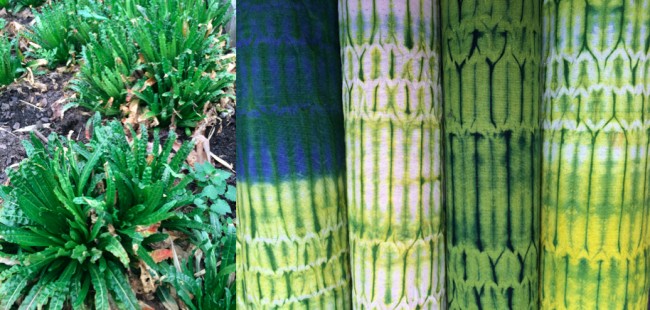 One does not choose to dye with natural colorants because they are easier, faster, less expensive or even make a more long lasting color. If fact, natural dyeing often takes more time, costs more (depending upon what dyes you use), and creates colors that are sometimes more fragile.
One does not choose to dye with natural colorants because they are easier, faster, less expensive or even make a more long lasting color. If fact, natural dyeing often takes more time, costs more (depending upon what dyes you use), and creates colors that are sometimes more fragile.
So, why would I so emphatically be talking about, teaching, and be engaged in natural dye process?
Of course there are all the environmental issues that affect my personal well-being and the larger ecological system. I no longer need to wear a respirator for fear of breathing potentially toxic dye powders. The leftover dye usually gets made into “lakes” for later re-use. Waste material contributes to my compost and garden, rather than polluting water systems or the ground. It’s also well known that the manufacturing of synthetic dyes is not environmentally benign whereas the raising of organic dye plants is.
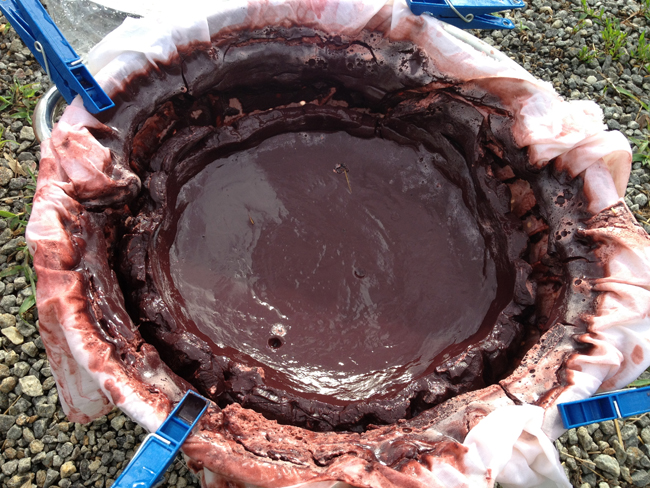
When it comes right down to it, the study and use of natural dye has made life far more interesting.
It is a form of interdisciplinary study. It has prompted me to become a student of history, botany and chemistry. I now spend time in the garden and in the greater outdoors foraging for plants. I grow some of my dye plants and recently took a botany class to increase my knowledge. I have always grown a few things to eat in my garden. I began growing dye plants as a means of understanding the dyes that I was using. Now I rely on some of the plants I grow and dry each year as source material.
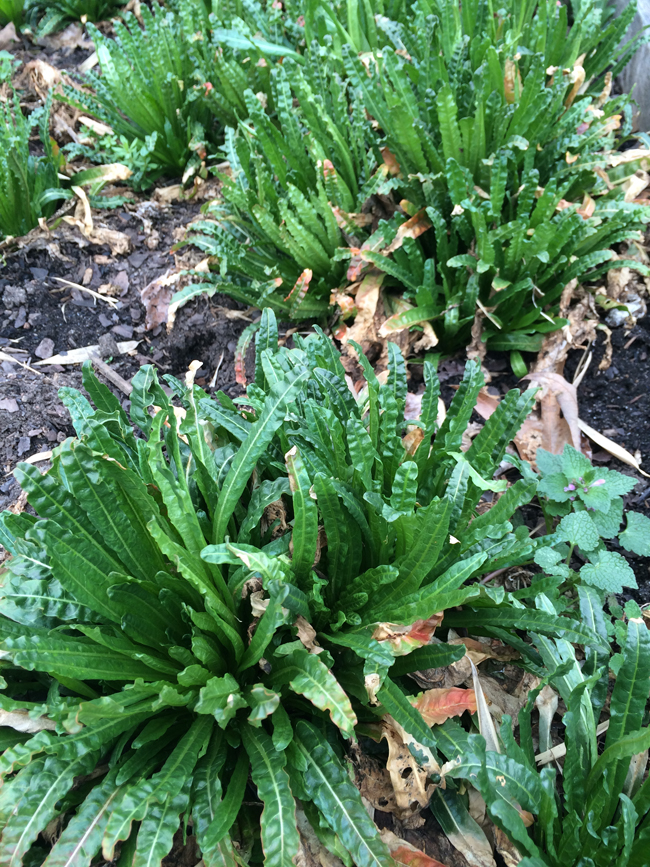
My awareness of plants and their many properties has been heightened. Historically, many of the dyes plants also have attributes for healing, especially in eastern medicine. For years, my Chinese medicine doctor has been prescribing a tincture of Isatis tinctoria to ward off colds and infections. I was taking this long before I realized this plant is woad, a source of indigo pigment.
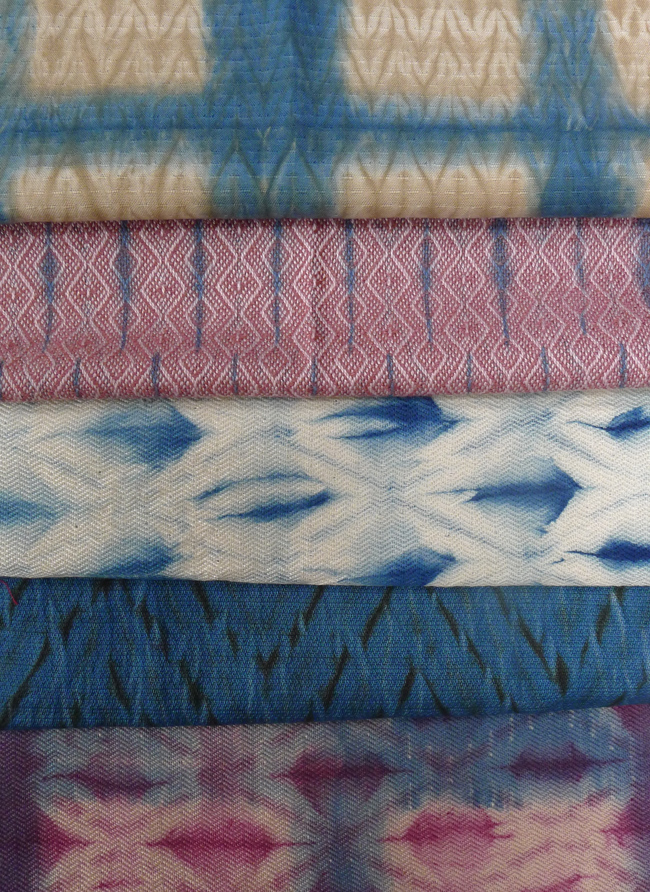
Dyeing with natural colorants has awakened other senses too.
Each dye has its own unique smell, a specific process of extraction and a distinct hue. I used to spend hours developing synthetic dye formulas, mixing primary colors to arrive at precise formulas that pleased me. Plant and insect dyes naturally achieve the types of colors I am after, since each dye contains a number of different colorants and tannins. Now I simply find the best way to attach those colors to the fiber.
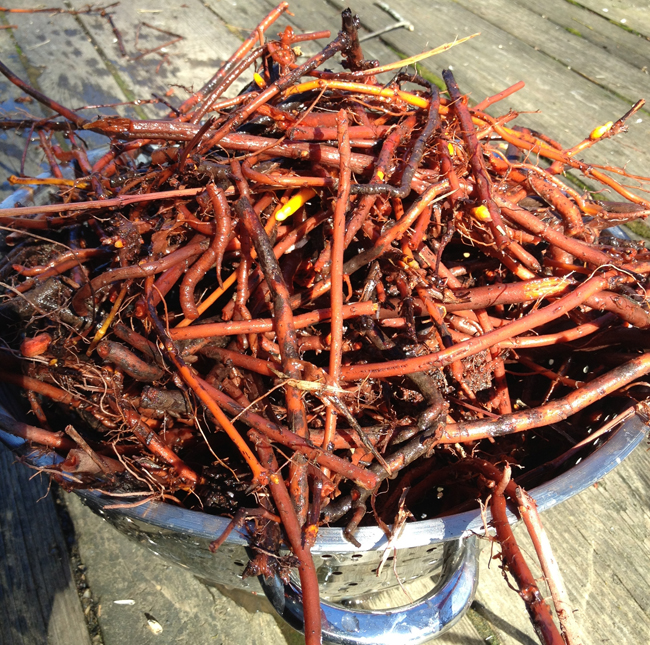
The dyes can vary according to the growing season, conditions and source. This means there are always some surprises. I feel that I am working in partnership with the dyes – rather than controlling them.
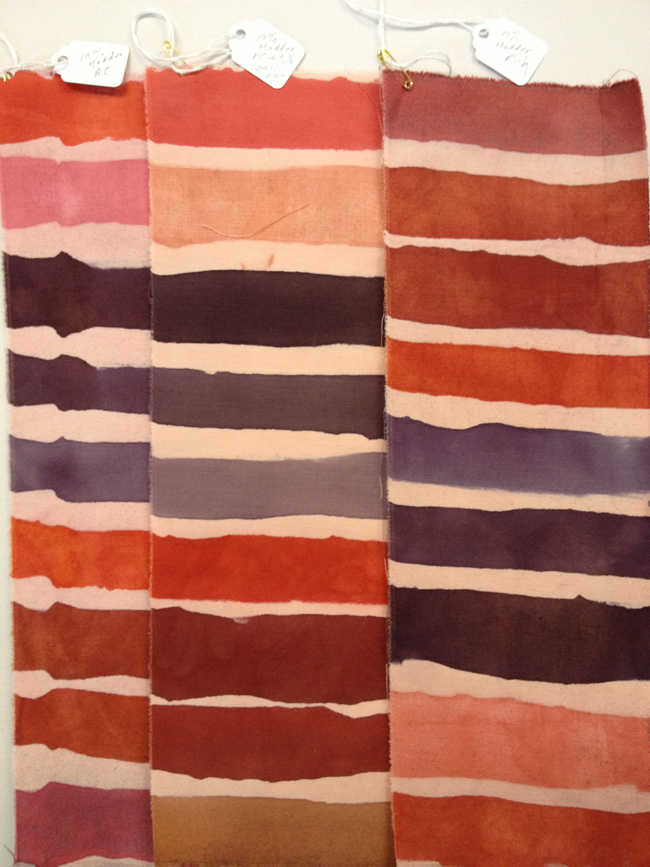
Some months ago I attended the Interwoven Globe exhibition at the Metropolitan Museum of Art in New York City. All of the featured textiles dated from 1500-1800, which meant that every textile in the show was dyed with natural colorants. I found myself completely focused on the colors and the global big picture that included trade, dye skills and sources of color.
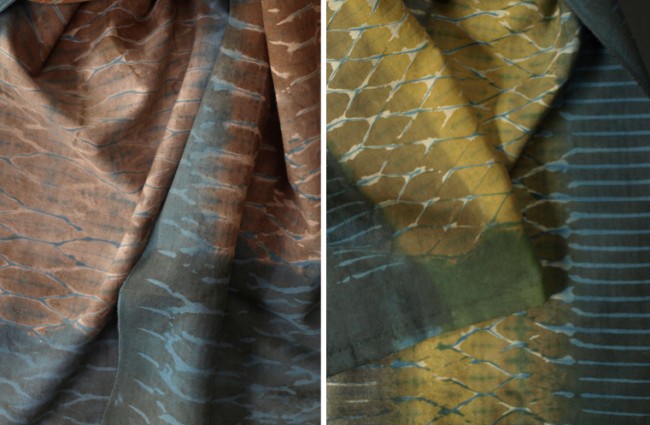
I continue to learn. Much of my knowledge comes from my experiments in the dye studio. I keep good records and am able to repeat results. There are other people who know more than I do about the plants, the dyes and the processes. I have found myself taking classes lately in order to learn from the experience of others. I have had excellent teachers and each one helps me to understand another aspect of the craft. All of this helps me fine tune my own personal approach. What I know, practice, and teach is always a work in progress.
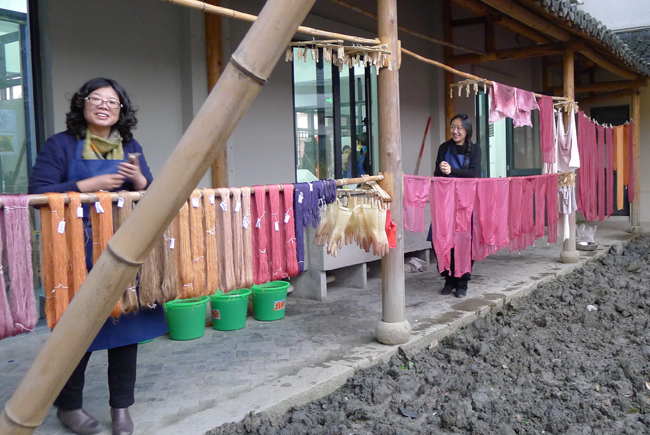
For many years my studio work focused on weaving and synthetic dyeing. It also included technical processes such as color removal, vat dye discharge and printing with dyes.
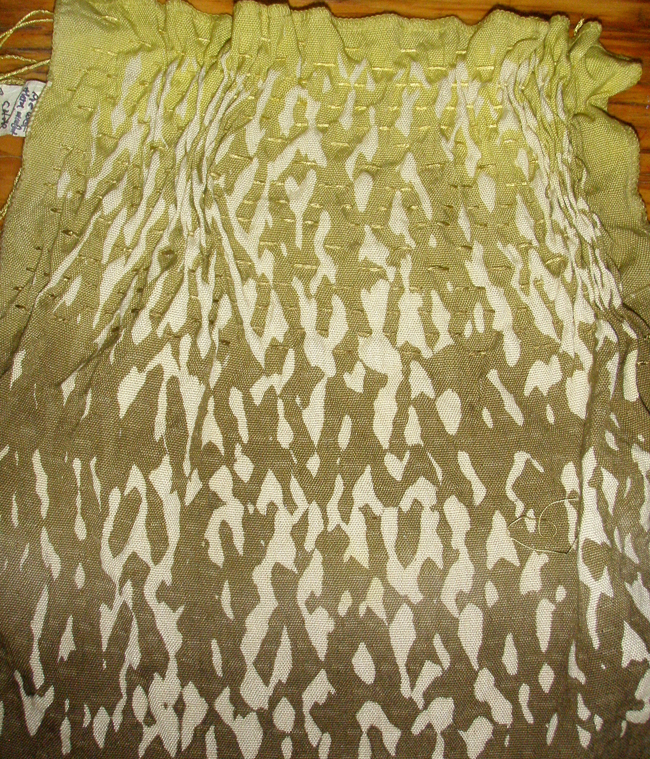
It has taken some time and practice, but I have learned to accomplish similar results using natural dyes. My newest work includes cross-dyeing of fabrics that I weave especially for natural dyeing.
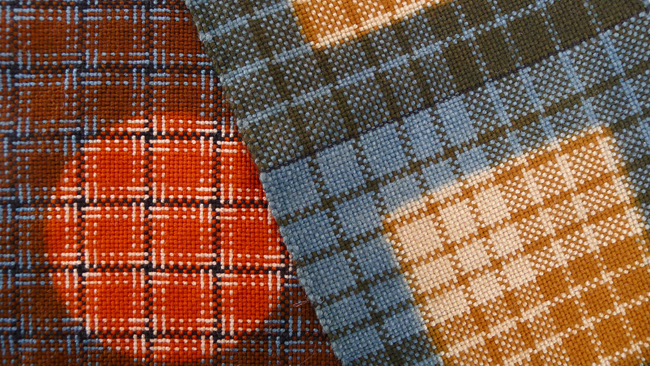
Are natural dyes as effective and long lasting as synthetic dyes?
Some of them are – or are nearly so. By carefully selecting my dyes and using proper application methods, I can achieve color fastness levels that approach those of fiber reactive dyes. I limit my practice to only the most benign of mordants and test all of my dyes for lightfastness. If a dye does not perform well, I don’t use it – no matter how much I might like that color. Dr. Kazuki Yamazaki, a 3rd generation natural dyer from Japan, told a class I recently attended in Jinze, China “If lightfastness is the MOST important factor in your dyes, then you should not be using natural dyes.”
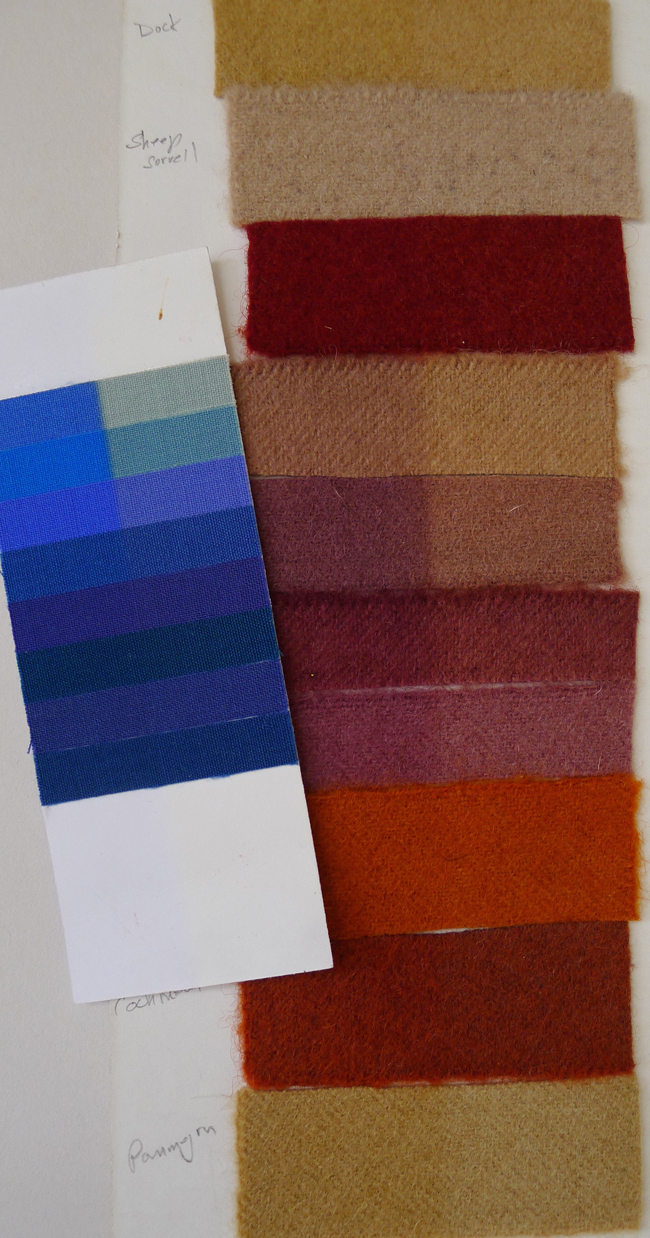
There are so many other reasons to investigate this approach to dyeing. It is a personal choice. Natural dyes can be approached as child’s play or serious studio work. My own tendency leans toward the serious. As a teacher and a studio artist, it’s important to bring as much skill to the process as I can.
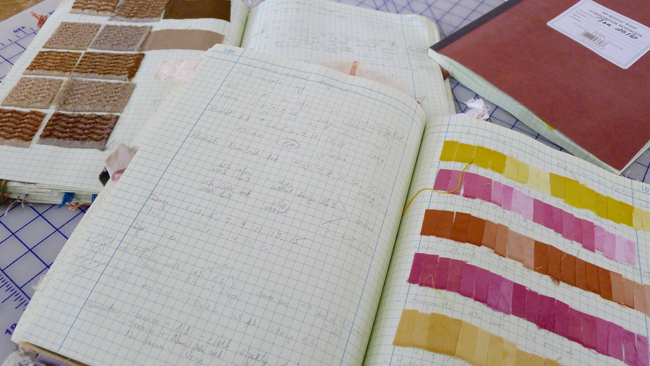
I have no visions of scaling up to large production or trying to convince industry to make a change to natural dyeing. But I can – and have – made this satisfying choice for myself and the way I spend my days in the studio.
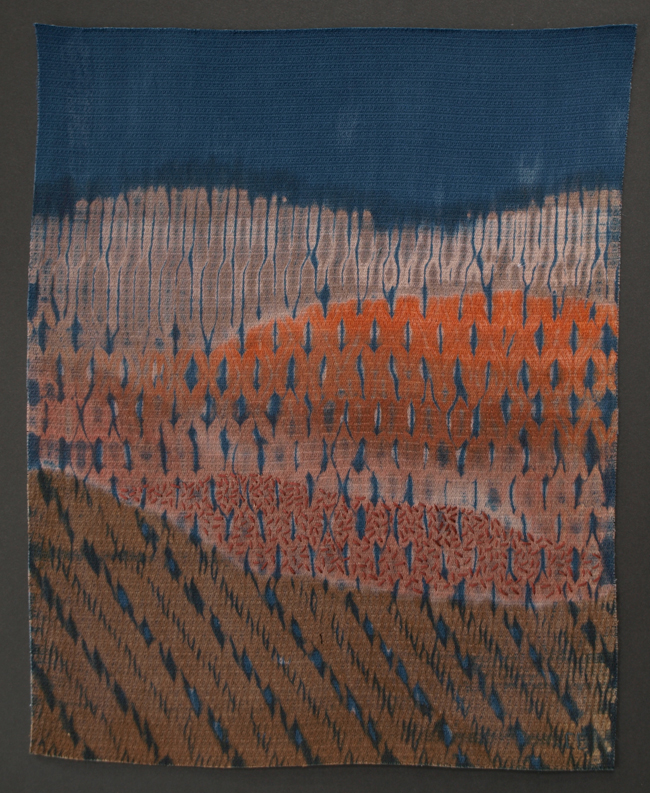
_________________________________
 Catharine Ellis has been making textiles for over 40 years. Her work, which has been exhibited in venues worldwide, most often combines both weaving and dyeing. She teaches internationally.
Catharine Ellis has been making textiles for over 40 years. Her work, which has been exhibited in venues worldwide, most often combines both weaving and dyeing. She teaches internationally.
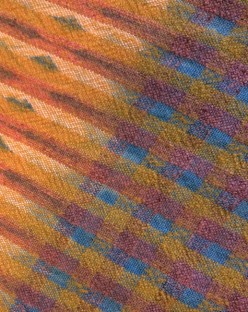 For the last 10 years her focus has been primarily on natural dyeing. She continues to research and develop new applications for the use of natural colorants in her own textiles and for her teaching.
For the last 10 years her focus has been primarily on natural dyeing. She continues to research and develop new applications for the use of natural colorants in her own textiles and for her teaching.
Ellis is the author of Woven Shibori, (Interweave Press, 2005). A new, updated version of the book focused on natural dyes will be released in 2016.
Visit her website at www.ellistextiles.com
Visit her blog at blog.ellistextiles.com


6 Comments
Diane says
March 1, 2016 at 9:53 am
I, too, have been exploring the creation of a dyer's garden and have found some good books on the subject.
Maggie says
March 4, 2016 at 7:00 am
I enjoyed reading your article as I too have embarked on the adventurous road of natural dye techniques in my work. It's a wonderful way to work and the colours I create are always a wonderful surprise to me. It does take time, and a more considered approach, and it has enhanced my practice, this way of working.
Kris says
March 11, 2016 at 11:08 am
Well and eloquently said. I am glad, too, there is mention of the light fastness issue, and that natural dyes - as with any dye - cannot be the "be all, end all" answer. For garments, accessories, linens, decorative items, etc., they are wonderful. However, if I am weaving/dyeing anything which will be on the wall, or exposed to more light than being in a drawer, a closet or on the sofa, synthetic dyes are superior, particularly acid dyes. And, the auxiliaries of acid dyes are more benign than those required for the fiber reactive/cellulose process.
Catharine Ellis says
March 14, 2016 at 12:40 pm
Tannins and even a small amount of ferrous will improved the lightfastness of many natural dyes, even to the point of using them on the wall. But of course the dyes must be carefully chosen and tested!
Lindsay says
May 21, 2019 at 7:38 am
I recently just got started with natural dyeing and I have a question that I just can't find the answer to. The last comment was from 2016 so this is probably just going to go out into the void but I figured I'd try because you seem to know a lot about this subject. I just dyed alum mordanted linen with black beans and a little baking soda. I washed them with ph neutral soap afterword and was really happy with the colors I was getting. Then I spilled some wine on a sample and it turned purple/pink. I tested the wine on some avocado pit dyed fabric to see if acid always changed the color of natural dyes and it didn't change. So I see that some natural dye materials are more ph sensitive than others. Is there anyway to fix a color like that I like without worrying that it will change color drastically down the road? I just can't promise I'm never going to spill wine on myself.
Lauren Sinner says
May 22, 2019 at 11:41 am
Hello Lindsay. From what we know here at SDA, yes some natural dyes are more pH sensitive than others. From what I know, there is no way to fix a natural dye so it doesn't change in the future. That's one of the exciting and frustrating things about the process!
Related Blog Articles
Creative Process
“Fringe: On the Edge of Fiber” — Out Now!
Creative Process
Friday Fibers Roundup: Craft & Color
Creative Process
“Standing Tall: A Heart-FELT Reflection” by Martien van Zuilen